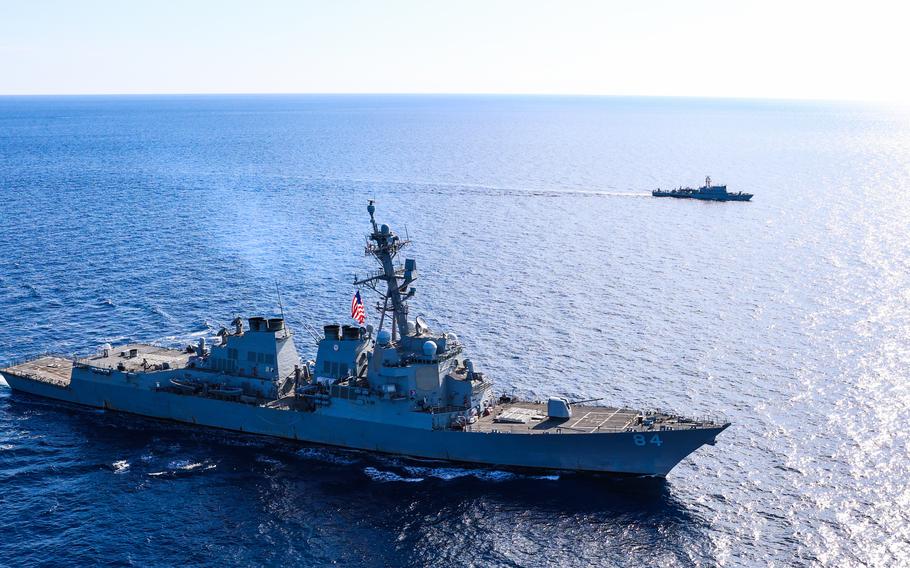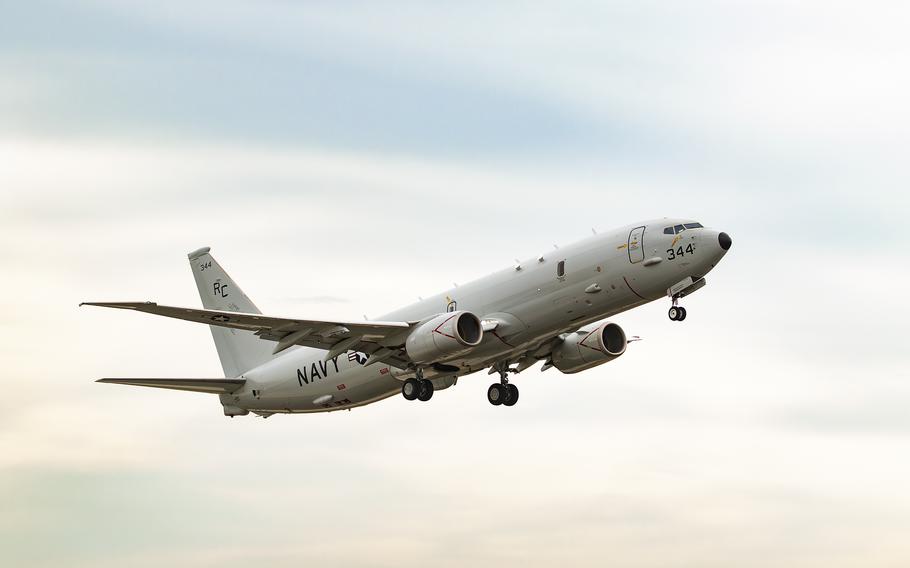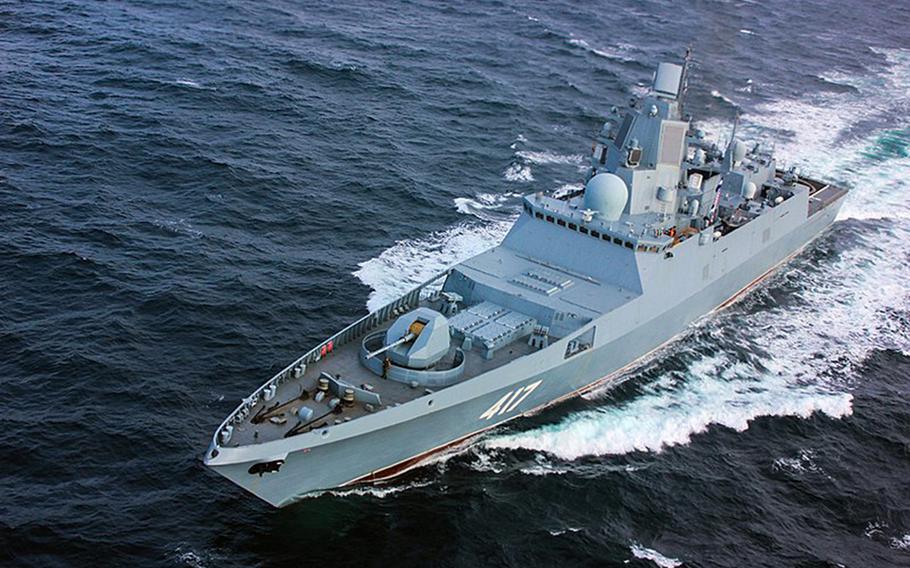
The destroyer USS Bulkeley conducts maneuvering exercises in the Mediterranean Sea with the Cypriot offshore patrol vessel Commodore Andreas loannides on Nov. 29, 2024. (Joseph Macklin/U.S. Navy)
NAPLES, Italy — Russia’s sudden loss of operations at its bases in Syria could deliver a gut punch to the Kremlin’s ambitions in the Middle East and Africa while offering the U.S. and its allies opportunities to extend their influence.
It’s uncertain how much success Russia is having while negotiating with Syria’s dominant forces to retain its naval and air bases in the country. Russian officials have said they are communicating with Hayat Tahrir al-Sham, the main group that led the toppling of former Syrian President Bashar Assad.
On Monday, recent satellite images showed that naval piers home to Russia’s Mediterranean task force in Tartus remained empty. The location of at least three warships and a Kilo-class submarine that had languished off the coast of Syria since the fall of Damascus wasn’t clear.
They may have a new homeport in Libya, where Russia has begun moving its naval assets, CNN reported Monday, citing unidentified U.S. officials. Moscow is pressuring Libyan National Army commander Khalifa Haftar for space at a Benghazi port, CNN said.
The Russian withdrawal from Tartus and its air base 52 miles north of the naval docks appeared to be large-scale and significant. But it remains unclear whether the move is permanent.
The Kremlin’s maritime presence in the central and eastern Mediterranean Sea is dependent on Tartus, and the airfield is a critical refueling point for operations in Africa, said Michael Petersen, a principal research scientist in the Russian studies program for the Arlington, Va.-based think tank CNA.
The bases “are crucial for Russia’s larger global and regional aspirations,” Petersen said. “If Russia does not have access to these bases, then it will be a major strategic blow.”

The P-8A Poseidon, a patrol and reconnaissance aircraft, is one asset the U.S. Navy has operating in the Mediterranean Sea. (Jacquelin Frost/U.S. Navy)
That loss, even if temporary, could offer opportunity for the U.S. and NATO, Petersen and other analysts said.
“Removing the Russian navy from NATO’s southern flank would remove one irritant, as would removing it from Israel’s western flank and from proximity to the Suez Canal,” said James Holmes, chair of the maritime strategy program at the Naval War College in Newport, R.I. “The fall of Syria is a setback for Russian and ‘axis’ geopolitics in more ways than one.”
The Mediterranean is home to the Naples-based U.S. 6th Fleet. The Navy’s only air operations in Europe, including P-8 Poseidon patrol and reconnaissance aircraft and an MQ-4C Triton drone detachment, are at Naval Air Station Sigonella in Sicily. The fleet also has operations at Naval Support Activity Souda Bay in Crete.
The destroyers USS Bulkeley and USS Oscar Austin are on duty in the Mediterranean, USNI News reported Monday.
U.S. forces could work the situation to their advantage if the Russian fleet feels compelled to shadow them, as it often does. It would stress Russian ships that now have limited resources for replenishment, repair or rest, Petersen said.
He added that as of last week, it appeared the Russian fleet, distracted by its problems in Syria, wasn’t inclined to follow U.S. ships.
“That tells me that the U.S. has a maritime security advantage at this point,” Petersen said.
American warships can operate more freely, potentially allowing the U.S. to focus more on security problems beyond the Mediterranean, such as the Red Sea, he said.
That advantage also could be exploited in Africa, where the U.S. has struggled to make and retain relationships with countries, particularly in the Sahel region, which was once considered the centerpiece of Washington’s security strategy.

The Russian frigate Admiral Gorshkov was reportedly in the Mediterranean Sea earlier in 2024. Russian navy vessels are apparently leaving their naval base in Syria following the fall of Kremlin ally Bashar Assad's regime. (Russian defense ministry)
Without a navy base in the Mediterranean, Russia would have difficulty supplying its troops in the Middle East and Africa, making it a challenge to maintain its influence in those regions.
“But whether or not the U.S. and NATO are going to be able to exploit those windows of opportunity is another question,” Petersen said. He noted Russia’s deep, institutional relationships with many African countries and waning U.S. influence on the continent.
Russia could look to locations other than Libya, such as Sudan or Algeria, to reestablish its Mediterranean operations.
That would take “time and money to develop the infrastructure to make the deals happen,” said Katarzyna Zysk, a professor with the Norwegian Institute for Defence Studies in Oslo and a nonresident senior fellow with the Atlantic Council.
Another possibility is a ceasefire in Ukraine that, in turn, would end restrictions that keep warships from entering or leaving the Black Sea, where Russia has a navy base.
That freedom of movement could help Russia somewhat restore its capabilities in the eastern Mediterranean, analysts said.
However, negotiating an end to Russia’s war in Ukraine poses a sizable challenge, Zysk said.
The Russians “cannot lose face in Ukraine. … They’ve put everything on that card,” she said.